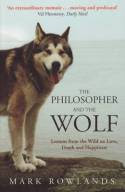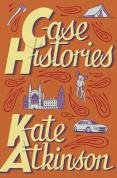 Advertising and propaganda – two words to describe the same thing? Yes and no.
Advertising and propaganda – two words to describe the same thing? Yes and no.Both have the purpose of persuasion. Both wish to bring about a change in the behaviour of the viewer or listener. Both seek to inform and to provide information. Both convey a message in simple, memorable terms. Both aim to move the observer to a better place. Both convey one central message at a time.
Yes, both almost exactly the same in every way. The one and only major difference between advertising and propaganda as far as I can tell is this:
Advertising is for commercial purposes with a concrete outcome of some sort and requires the flow of money from us (the consumer) to them (the producer or seller) – buy this product or that service or use this facility or visit that location to meet ambition or need or desire or aspiration X,Y or Z. Propaganda by contrast has an ideological or political intention and does not ask us to pay with money; instead it makes its appeal directly to the heart or the soul and asks us to make the larger investment of aligning (or re-aligning) our belief systems. In that sense, propaganda is both more powerful and rather more abstract.
I’m not an especially political person but propaganda fascinates me. If you are able to step outside the ideological milieu that has produced the propaganda in question (and it is a big if I know) and look objectively at the message being conveyed I think you can uncover some of the most powerful use of words or imagery that our minds can produce.
At the mildest end of the propaganda spectrum perhaps lies public information, short pithy messages that are provided for our own benefit.
Eat less salt. Smoking kills. Don’t drink and drive. Think once, think, twice, think bike. Stop, look and listen. Clunk click every trip. Go to work on an egg. Know your limits.
There’s certainly a fine line for any government between promoting, say, public health and being considered to be a busy body no fun know it all. I was standing waiting to cross a busy road a couple of years ago when three double decker buses drove past me. On the side of each one was a different public information message. It was almost enough to make me rush out and eat as much salt as I possibly could whilst washing it down with vats of white rum and smoking fistfuls of cigarettes. But I digress.
At the other end of the propaganda spectrum is the purely political or ideological message. The medium (a picture or photograph, say) might be simple; the message behind it is anything but. If we retain our objectivity as a viewer, we are able to recognise and admire, for example, the raw and powerful imagery of propaganda posters from Soviet era Russia; recognising the artistry does not require us to align ourselves with that ideology if we remain objective. In the same way, if we retain our objective eyes we can observe and identify the purpose behind the specific selection of the photograph of a modern-day adversary that is being used as the backdrop to coverage of a conflict on our own television news broadcasts.
For obvious reasons, wars and conflicts act to generate the most powerful propaganda of this kind. The Imperial war Museum in London has a wonderful collection of war time posters and postcards and I bought half a dozen or so on my most recent visit there last year. But examples do turn up in all sorts of places.
A few years ago, Stuart and Mary Manley of Barter Books in Northumberland came across a WWII poster neatly folder inside a large box of dusty old books that they’d bought at auction. They liked it so much they had it framed and mounted it in the window of their second hand book shop. It quickly caught the attention of customers and passers by so they decided to do some research into the poster’s origins. They found that the poster had been designed as the third in a set of three back in the spring on 1939, but had been intended to be publicly distributed only in the event of crisis or invasion. As this never happened the poster was never distributed and had remained unseen for fifty years until the random copy turned up in that box of old books.
The popularity of Stuart and Mary’s poster led them to print and sell facsimile editions of it, and that’s how I came across the story in the newspaper the other day. It’s a great poster and a wonderful piece of British wartime propaganda. But I also felt it had a good deal of resonance right now, albeit in a different way, seventy years after the event. So I ordered a copy and it arrived this morning. I shall have it framed and hang it on my wall.
I guess it’s truly a piece of propaganda fit for the credit crunch generation.
If you want to buy your own copy, here’s the link to Barter Books: http://www.barterbooks.co.uk/catalog/product_info.php?products_id=32036. There is also much more information about the poster on their website if you’re interested.




I am not sure about your side of the ocean, but over here I think Congress is more in need of that poster than is the general population.
ReplyDeleteI do not think such a knee-jerk, panic-stricken group of people such as our Congress has previously been assembled in the history of this country.
I don't think there's been a final garden report yet, has there?
Perhaps order a copy of the poster and send it to your Congressman / woman?? :-)
ReplyDeleteNo, final garden report is probably still a week away. I'm making good progress but there's still a huge amount of spadework (literally!) to be done...
Where the house had been derelict for quite a few years (and the yard was also untouched for many years before that), the rear wall had collapsed completely and people had dumped all manner of rubbish in it (from rubble to clothes). A lot of that I cleared at the time of my original renovations but this time round I've already shifted another dozen bags of rubble to the tip and moved tons of soil by hand to reduce the ground levels. But I can at least see light at the end of the tunnel now!!